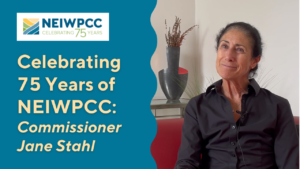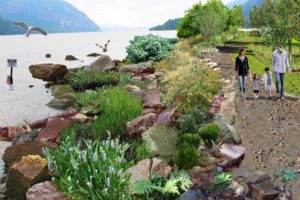-
Addressing Emerging Contaminants
By Christina Stringer In 1962, the landmark work “Silent Spring” posed the question, “Can anyone believe it is possible to lay down such a barrage of poisons on the surface…
-
NEIWPCC Launches Clean Water Success Story Project
Fifty years after the passage of the federal Clean Water Act (CWA) – and many successes later – a new EPA-funded grant will focus on sharing these accomplishments. NEIWPCC will…
-
A New Approach to Stream Health in the Lake Champlain Basin
Meet Stream Wise: a new program that works to bring neighbors together to protect and restore healthy waterways across the Lake Champlain region. The goal of the program is to…
-
Meeting Challenges in Modernizing the Clean Water Act
By Heather Radcliffe October 2022 marks the 50th anniversary of the Clean Water Act (CWA) and 35 years since its last major amendments. While there is much to celebrate —…
-
The “Only Girl in the Room:” NEIWPCC Commissioner Jane Stahl Reflects on Career
When Jane Stahl began her environmental career in the late 1970s, it was – not surprisingly – a male-dominated field. She did not let this deter her, and worked as…
-
Updated “Opportunities for Action” to Guide Lake Champlain Management
During a lakeside event on June 3, the Lake Champlain Basin Program (LCBP) released an update to its management plan, “Opportunities for Action: An Evolving Plan for the Future of the…
-
Defining WOTUS
By Richard Friesner The Clean Water Act (CWA) has fundamentally altered how Americans, and the world, interact with one of our most basic parts of the environment. The definition of…
-
Reflecting on 50 Years of the Clean Water Act
By Susan J. Sullivan 1972. Some of you were children, others were environmental advocates and college students, and many not even born. Yet 1972 was the year one of the…
-
Seven Years in the Making: Flood Resiliency Project Comes to Fruition on the Hudson River
The Hudson River’s popular and scenic Dockside Park in the village of Cold Spring, New York is the site of a new sustainable shorelines demonstration project. The $1.85 million resiliency…
-
NEIWPCC Environmental Analyst Joins Young Professionals at National Water Policy Fly-In
By Evan Karsberg Each year in Washington, D.C. there is a week-long conference dedicated to what is possibly our single most important resource: water. This year’s National Water Policy Fly-In,…




